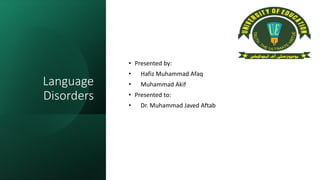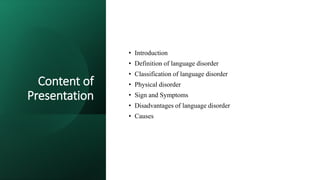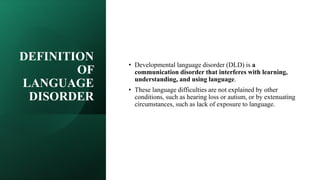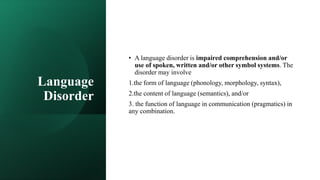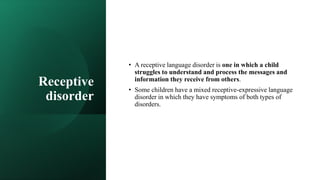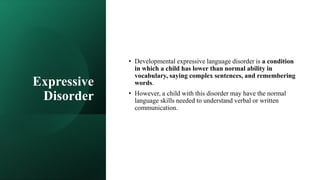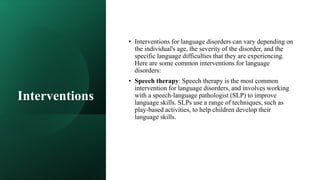The document provides an overview of language disorders, defining them as communication disorders that can impair understanding and use of language, encompassing both receptive and expressive types. It discusses causes such as hearing loss, genetics, and environmental factors, as well as interventions like speech therapy and educational treatments. The implications of language disorders can affect academic performance, social interactions, and mental health across an individual's lifespan.
